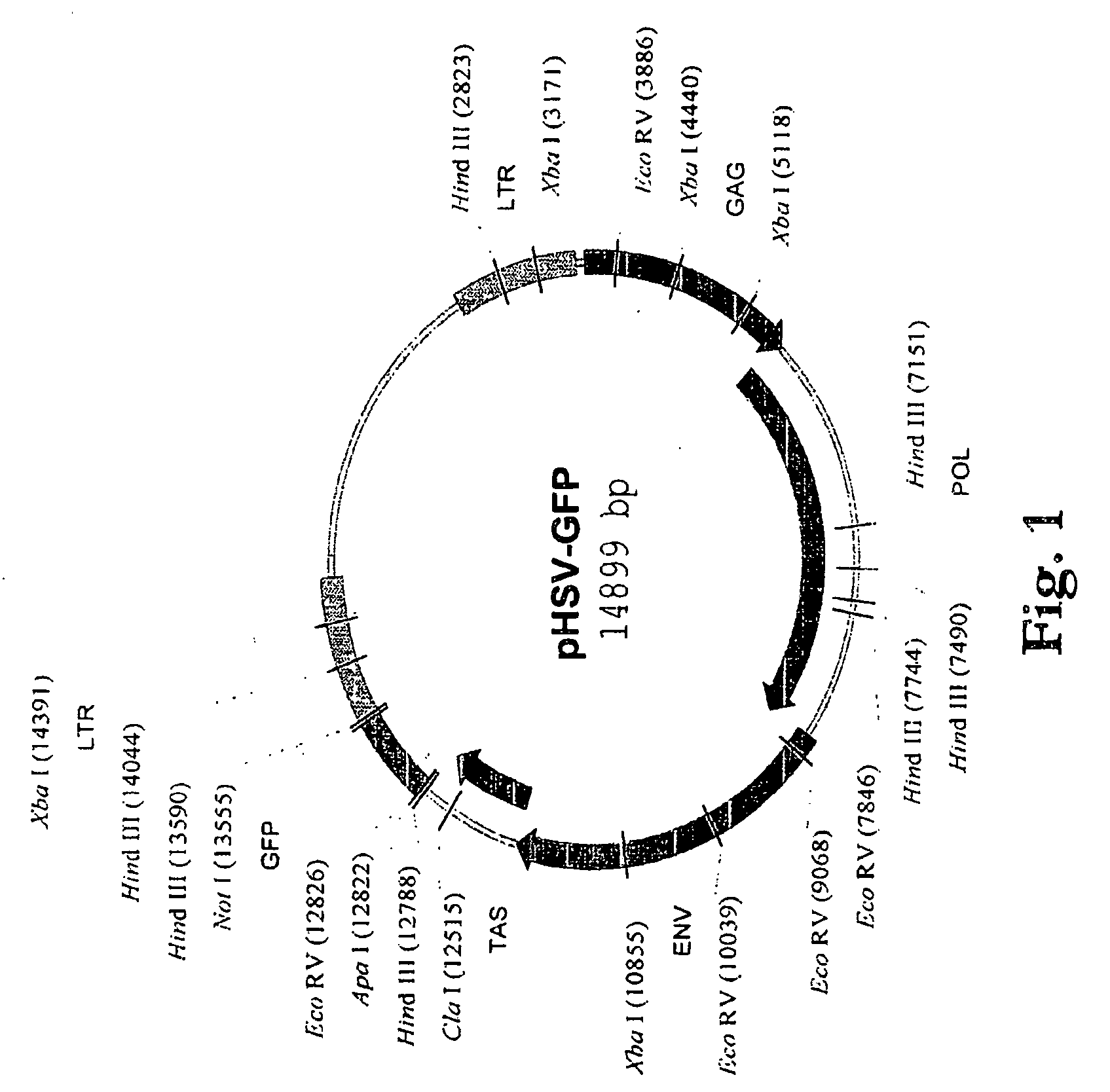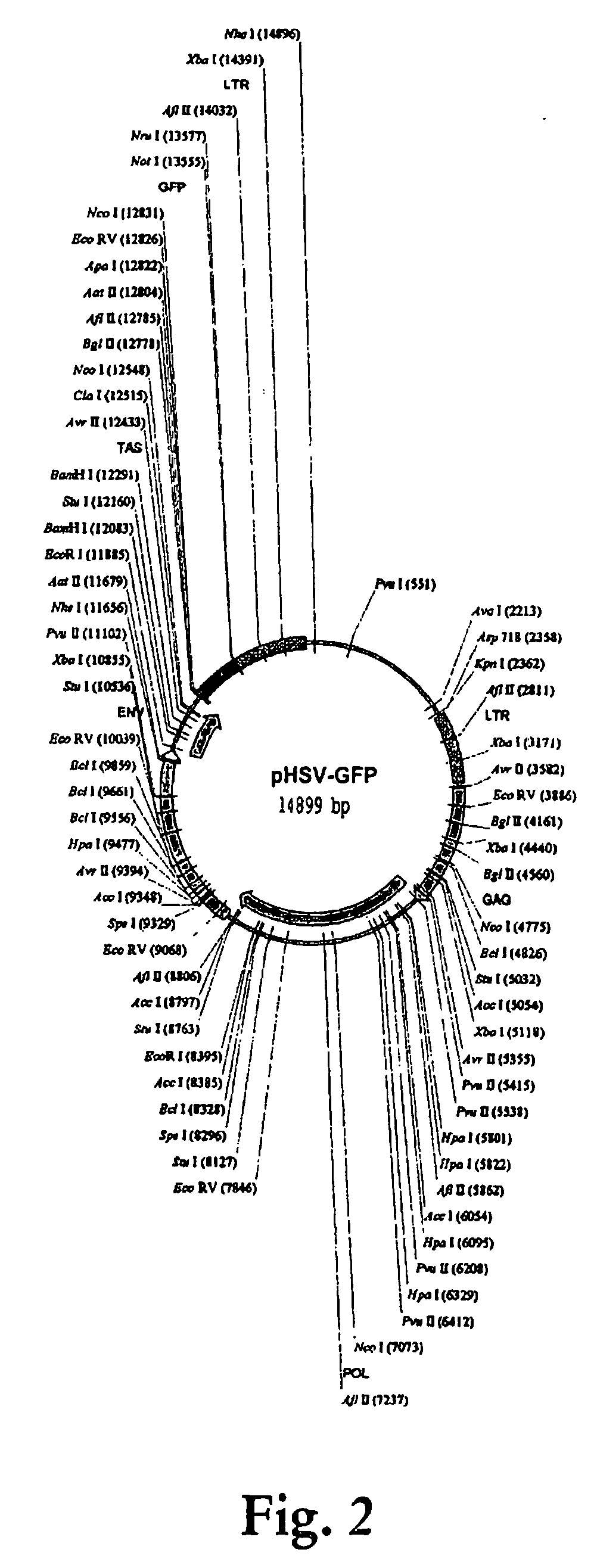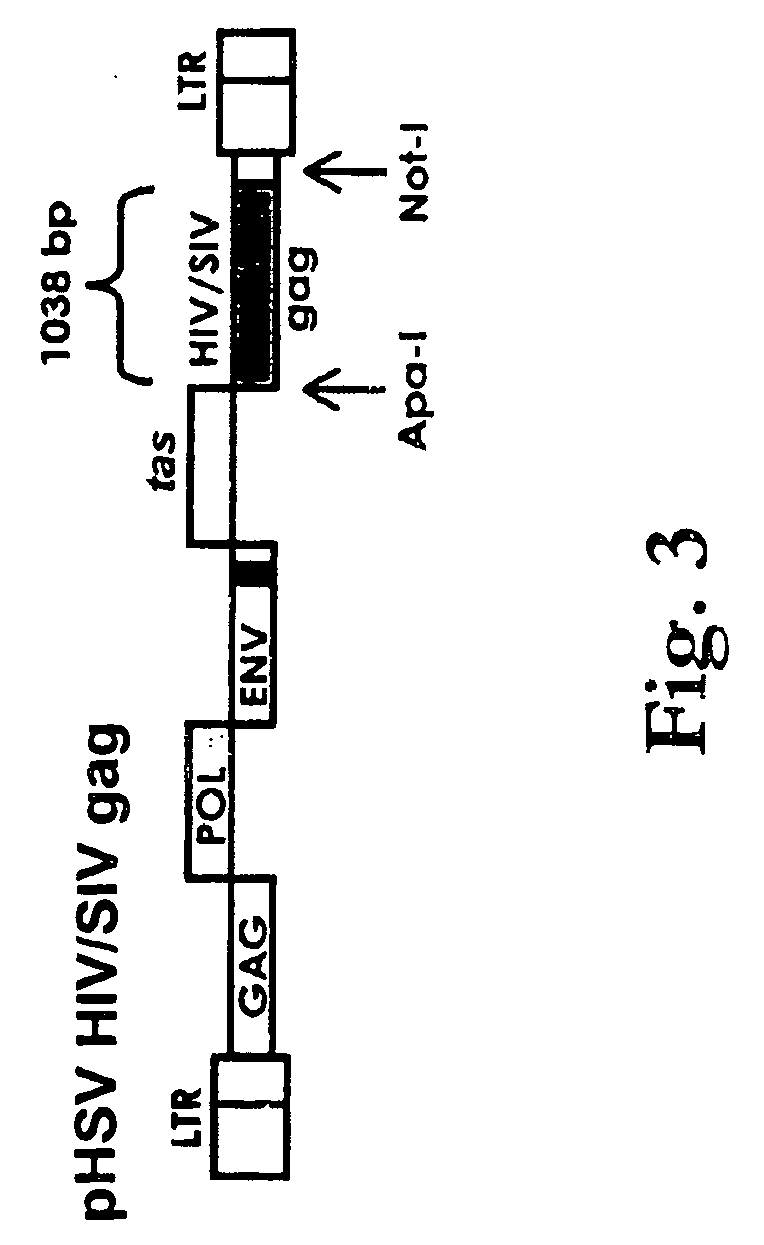Live replicating spumavirus vector
- Summary
- Abstract
- Description
- Claims
- Application Information
AI Technical Summary
Benefits of technology
Problems solved by technology
Method used
Image
Examples
example 1
[0154] 146. In order to obtain the p17 / p24 fragment of the HIV-1 gag gene, pSX plasmid containing the gag gene was subjected to 30 cycles of PCR using forward Apa1-p17 5′ primer and reverse Not1-p24 3′ primer. PCR product was cloned into a TA cloning vector (pCR2.1 Invitrogen; Carlsbad, Calif.) and expanded. FIG. 1 shows a map of the empty pHSV vector. The vector contains the viral envelope gene env as well as its structural gene gag and viral polymerase gene pol. The vector also possesses a transactivator (TAS) gene bel-1 and 2 LTR that flank the coding region of the vector. An inspection of the vector SEQ (SEQ ID NO: 1) shows where various restriction sites are located on the vector. A complete listing of the sites is found in FIG. 2 and these sites are shown in SEQ ID NO: 1.
[0155] 147. Inspection of the restriction map revealed ApaI and NotI unique restriction sites located around the BET (Bel-2) gene at 13522 and 12816 respectively. As such, the BET gene was chosen as the site ...
example 2
[0168] 157. Animal subjects can be used to screen the effectiveness of a pHSV vector and an antigen-encoding nucleic acid. Additionally, animal subjects may be used to study the vector-antigen combination's ability to prevent or treat a condition. The vector can also be used to induce a condition in an animal that is associate with a disease, and that animal can then be used to study the disease / condition or to study potential treatments for the disease / condition. Such conditions can be infections resulting from viruses, bacteria, or parasites; autoimmune reactions including inflammatory diseases, asthma, systemic lupus erythamatosis, muscular dystrophy, or multiple sclerosis, diabetes, tay-sachs, spinobifida, cerebral palsy, parkinson's disease, lou gehrigg disease, alzheimer's, hemophelia, Addsion's disease, Cushing's disease; or cancer. Animals can include but are not limited to mice, rats, pig, dog, monkey, chimpanzee, and human.
[0169] 158. Mice are injected with a sub-immunizi...
example 3
[0193] 176. In accordance with the methods described above the pHSV vector comprising an SIV-Gag-p17 / p27 construct was made. This vector is useful to establish a model for the study of the effectiveness of a particular treatment or prophylactic vaccine. For example, such a model can comprise a system to establish a foamy live viral vector for vaccine use. The pHSV with an SIV gag (p17,p27) insert has been tested in vitro and shown to express similar levels of SIV gag as the HIV gag engineered vector. This SIV gag live viral vector can be used to inoculate rhesus macaques in order to determine protective immune responses that can develop following in vivo expression of the vector gene products including the SIV gag protein. Inoculated animals can then be challenged with wild type SIV to further determine any potential vaccine induced efficacy by studying primary (sterilizing immunity) and secondary (time to morbidity) end points.
PUM
| Property | Measurement | Unit |
|---|---|---|
| time | aaaaa | aaaaa |
| temperature | aaaaa | aaaaa |
| serological cross-reactivities | aaaaa | aaaaa |
Abstract
Description
Claims
Application Information
 Login to View More
Login to View More - R&D
- Intellectual Property
- Life Sciences
- Materials
- Tech Scout
- Unparalleled Data Quality
- Higher Quality Content
- 60% Fewer Hallucinations
Browse by: Latest US Patents, China's latest patents, Technical Efficacy Thesaurus, Application Domain, Technology Topic, Popular Technical Reports.
© 2025 PatSnap. All rights reserved.Legal|Privacy policy|Modern Slavery Act Transparency Statement|Sitemap|About US| Contact US: help@patsnap.com



